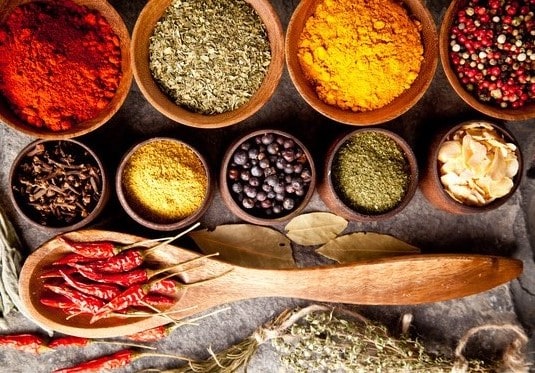
Healthy eating doesn’t mean bland eating, at least not in my definition. Over the course of my career as a registered dietitian nutritionist, I’ve heard from numerous people, including clients, family, and friends, that what holds them back from making healthier choices is that their options are limited to flavorless foods like steamed vegetables over steamed brown rice with steamed chicken or the classic cottage cheese filled cantaloupe bowl from the diet section of a diner menu.
I certainly like cottage cheese and brown rice and recommend them both as part of a healthy diet, but flavor is king in my menu plan. And thankfully I’m not alone, as dietitians around the world are sending that message this March in celebration of National Nutrition Month®. This year’s theme is Savor the Flavor of Eating Right, which means it’s time to set the record straight that healthy food can be (and in my opinion, should be) flavorful food! So how do we keep the flavor in without pushing out the nutritional quality of foods?
Boost flavor with herbs and spices rather than extra sodium and fat. Instead of using a heavy hand with the salt shaker, sprinkle your food with fresh or dried herbs like cilantro, mint, thyme, rosemary, and oregano. Spice things up with hot sauce or the ever-popular sriracha, or add some dried spices like chili powder, cumin, and paprika. This Santa Fe Veggie Chili is a perfect example of a nutrient-rich recipe that’s full of flavor too thanks to all those herbs and spices!
Warming spices like cinnamon, nutmeg, and ginger are a wonderful way to add flavor along with low- and no-calorie sweeteners to replace some of the sugar in traditionally sweet foods like pancakes, muffins, and even your morning oatmeal.
Change up your cooking method to bring out the natural flavor in food. No one can sustain a diet filled with steamed veggies day in and out – it’s just plain boring! To get more flavor out of your food, roast or grill it. You only need to add a little bit of heart-healthy olive oil to a batch of your favorite vegetables or your protein of choice and then into the oven or onto the grill to cook. The maillard reaction is to thank for the flavors and aromas released when roasting and grilling, especially the natural sweetness you get from roasted vegetables. And don’t forget about grilled fruit too – it makes for a delicious side dish or dessert!
Make your own dressings and sauces using acidic ingredients that are packed with flavor and low in calories. Citrus juices and vinegars add a bit of zest that will wake up your taste buds while maintaining your waistline. Use them to marinade your chicken and fish, tenderize your lean beef, or top your favorite whole grains like this Corn & Black Bean Quinoa Salad.
 Jessica Levinson, MS, RDN, CDN is a registered dietitian nutritionist and culinary nutrition expert. She has extensive experience as a recipe developer, writer, editor, and speaker. She is the co-author of We Can Cook: Introduce Your Child to the Joy of Cooking with 75 Simple Recipes and Activities (Barron’s, 2011), past columnist for the Culinary Corner column in Today’s Dietitian Magazine, and maintains a popular blog at JessicaLevinson.com. Jessica is an active member of the Academy of Nutrition and Dietetics (AND) and various Dietetic Practice Groups of the AND, including Nutrition Entrepreneurs, Food and Culinary Professionals, and Dietitians in Business and Communications. Follow her out on Twitter, Facebook, Instagram, and Pinterest.
Jessica Levinson, MS, RDN, CDN is a registered dietitian nutritionist and culinary nutrition expert. She has extensive experience as a recipe developer, writer, editor, and speaker. She is the co-author of We Can Cook: Introduce Your Child to the Joy of Cooking with 75 Simple Recipes and Activities (Barron’s, 2011), past columnist for the Culinary Corner column in Today’s Dietitian Magazine, and maintains a popular blog at JessicaLevinson.com. Jessica is an active member of the Academy of Nutrition and Dietetics (AND) and various Dietetic Practice Groups of the AND, including Nutrition Entrepreneurs, Food and Culinary Professionals, and Dietitians in Business and Communications. Follow her out on Twitter, Facebook, Instagram, and Pinterest.




